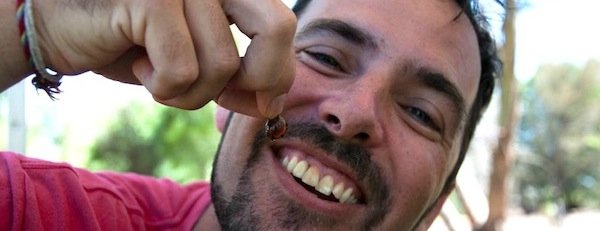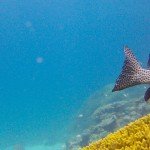After the first initial days of staying in Ayers Rock Resort, I was feeling rather conflicted as although my photography was reaching new heights in creativity and I felt a huge connection to the raw power of nature which was providing new learnings and insight, I felt something was missing out of my vision quest as I had seen from before the start of the trip that I was to connect with the Aboriginal tribes around Uluru and learn from their ancient and enduring wisdom and culture.
Even the friendly staff at the Resort reception weren’t able to help in this as the local company with Aboriginal led tours had just been recently taken over by another company and therefore was not operating for another month. And every time I was in the park no matter how much I saw myself meeting Aboriginals I never meet one.
Fortunately I was informed that a local aboriginal Alison Hunt, held Bush Tucker Tours every 2nd day near the town square in Ayers Rock Resort. For those who aren’t familiar with this terminology, have a look at Wikipedia http://en.wikipedia.org/wiki/Bushfood With hindsight the decision to attend that morning was the best thing I could do with my time. Alison is a wonderful spirit and presence to be around and has a great sense of fun whilst she patiently introduces the western mind set to the tribal ways of her people.
Together with my newly made outback friends Karla, travel photographer from Brazil, and Cynthia from Holland soon to be a savvy notary, Alison introduced us to Tjukurpa. This is the base of the foundation of indigenous life and society which is passed down by countless generations through song and dance since the time of creation, known to all Aborigines as Dreamtime. Tjukurpa includes the knowledge of all native plants and animals, and the appropriate ceremonies for all the major plant foods.
I think we were all surprised to find out how many different types of wild berries and other sweet products of nature are available during the colder months in the desert. For example Arnguli ( Bush Plum) or Ili (Wild Fig) can be found around the base of Uluru and in other rocky areas and are very sweet to the palate and can even be made into jam. In drier areas, honey like nectar from Kaliny-Kalinypa (Honey Grevillea) can be found or the ripe red fruits of Mangata (Desert Quodong) which often are dried for later consumption.
Many of these fruits can be made into medicinal pastes, and Alison demonstrated for us how to make skin moisturizer out of a local nut by cracking the outer shell open and grinding the soft flesh with a mortar and pestle made out of stone. We then took turns smearing the home made paste on each others arms and legs and generally having lots of fun.
Another highlight of the morning was trying honey ants, these small creatures produce a clear membrane or sac at the end of their body which fills up with a very sweet nectar fluid.
Although it may look a bit off putting at first, this local delicatessen is consumed by holding the dead ant with your fingers and gently placing the sack in your mouth and slowly sucking the nectar which is pretty much the best tasting honey I’ve ever had in Australia! Be careful though not to suck to hard otherwise the nectar will burst and fly everywhere but in your mouth! As getting to the honey ants is laborious, think locals digging all day often in very hot conditions down several meters into the ants nest, you can understand why this is considered such a treat.
It goes without saying that Aborigines posses an almost magical ability to discern where water is to be found in the open desert or dry areas. Further water can be found around Uluru. As the rock is very porous, excess water during seasonal heavy rains is absorbed from the surface and is slowly released in small streams around the base of Uluru, something the local tribes are undoubtedly very grateful for.
We then had an introduction by Alison how to play traditional clapping sticks made out of hard wood, used in ceremonies song and dance or just when you need to get someone’s attention! She proceeded to sing a beautiful local song whilst making rhythm with the clap sticks.
Next on our fun learning was balancing wooden food bowls called Pitu filled with berries on our heads whilst walking around pretending to be a warrior in my case, or tribal women collecting food from the bush with results I am sure you can imagine! Karla and Cynthia being women also had the extra challenge of carrying a larger Pitu under their arm and pretending they were carrying a child whilst walking and balancing the food on their head which led to some great photographic moments.
And to finish off a great experience Alison showed us how to carve clap sticks from freshly cut wood. I personally realized I have a budding career as aboriginal tool maker as I sat chipping and peeling away the layers of bark to reveal a professional looking clap stick, or so I thought!
I am very grateful to have had such an interesting and fun time whilst learning something of local traditions and would recommend everyone who passes through Ayers Rock Resort to look out for Alison at 10:30 in the morning just in front of town square.
[Text by Adam Smith/ Photos by Karla Brunet]







Social Profiles